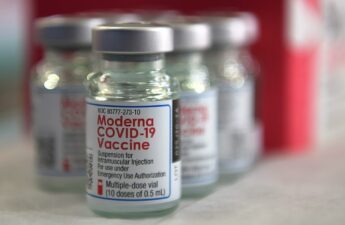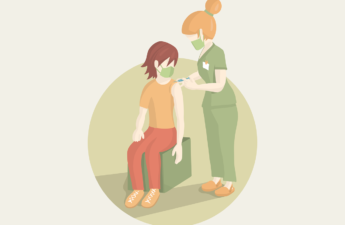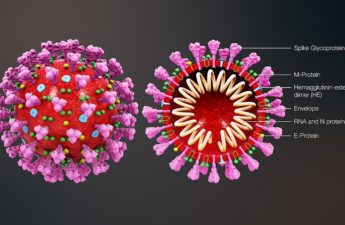Category: Infectious Disease
A nagging cough can hang on for weeks or months following a respiratory illness – and there is precious little you can do about it
Relentless coughing after a viral infection can be frustrating and worrisome, but in most cases, coughs resolve over time.
Faeces, urine and sweat – just how gross are hot tubs? A microbiologist explains
while you’re relaxing in the warm water, you’ll likely breathe in or swallow your Jacuzzi partner’s body’s bacteria, viruses and fungi.
Genetics might explain why some people have never had COVID
. . . but we shouldn’t be too focused on finding out
King County and the City of Seattle will no longer require proof of vaccination against COVID-19 as a condition of employment.
With King County’s high level of vaccination booster uptake and lower levels of community spread, hospitalizations due to COVID infection remained at a safe level, making the overall risk forecast low enough to lift the mandate for employees, volunteers, and contractors.
Yes, masks reduce the risk of spreading COVID, despite a review saying they don’t
An updated Cochrane Review published last week is the latest to suggest face masks don’t work in the community.
However there are problems with the review’s methodology and its underpinning assumptions about transmission. Well-designed real-world studies during the pandemic showed any mask reduces the risk of COVID transmission by 50–80%, with the highest protection offered by N95 respirators.
Artificial tears product linked serious eye infections, health officials warn
DOH, CDC encourage residents to stop using EzriCare Artificial Tears
We tested the wastewater from planes to detect COVID among travellers – here’s what we found
It’s important for all countries to monitor what potential new diseases, and new variants of established diseases, are entering their borders.
NEW CASE OF MEASLES IN KING COUNTY
The individual was at Seattle-Tacoma International Airport and Providence Swedish First Hill while infectious. Anyone who was at these locations within the time span that this person passed through may have been exposed to measles.
Child Vaccination Rates, Already Down Because of COVID, Fall Again
Child vaccination rates dipped into dangerous territory during the first year of the COVID-19 pandemic, when schools were shuttered, and most doctors were only seeing emergency patients. But instead of recovering after schools reopened in 2021, those historically low rates worsened. Experts fear that the skepticism of science and distrust of government that flared up during the pandemic are contributing to the decrease.
China’s COVID situation is dire – but it shouldn’t pose a big risk to other countries
In contrast to China at the outset of this wave, most countries by now have high immunity and protection against severe disease and death from COVID. The European Centre for Disease Prevention and Control has noted that China’s surge “is not expected to impact the COVID-19 epidemiological situation” in Europe.
Most long COVID cases had mild initial infections, UW study finds
Study found that a staggering 90% of people living with long COVID initially experienced only mild illness with COVID-19. After developing long COVID, however, the typical person experienced symptoms including fatigue, shortness of breath and cognitive problems such as brain fog – or a combination of these – that affected daily functioning. These symptoms had an impact on health as severe as the long-term effects of traumatic brain injury. Our study also found that women have twice the risk of men and four times the risk of children for developing long COVID.
COVID in 2023 and beyond – why virus trends are more difficult to predict three years on
So how will the pandemic be felt in 2023? This question is in some ways impossible to answer, given a number of unknowns. In early 2020 the scientific community was focused on determining key parameters that could be used to make projections as to the severity and extent of the spread of the virus. Now, the complex interplay of COVID variants, vaccination and natural immunity makes that process far more difficult and less predictable.
Public Health – Seattle & King County report assesses its COVID response
King County achieved the lowest death rate due to COVID-19 of the twenty largest metropolitan areas of the country (as of January 2022).
As viral infections skyrocket, masks are still a tried-and-true way to help keep yourself and others safe
Wearing a surgical mask in an indoor public setting reduces the odds of testing positive for COVID-19 by 66%, and wearing an N95/KN95 type of mask lowers the odds of testing positive by 83%.
Local health officials and health system leaders in Washington state urge public to wear masks while in indoor spaces, keep up-to-date on vaccines
In addition to RSV and influenza, new COVID-19 variants are taking hold and immunity from past vaccination is waning for many people who have not yet received an updated booster shot.













